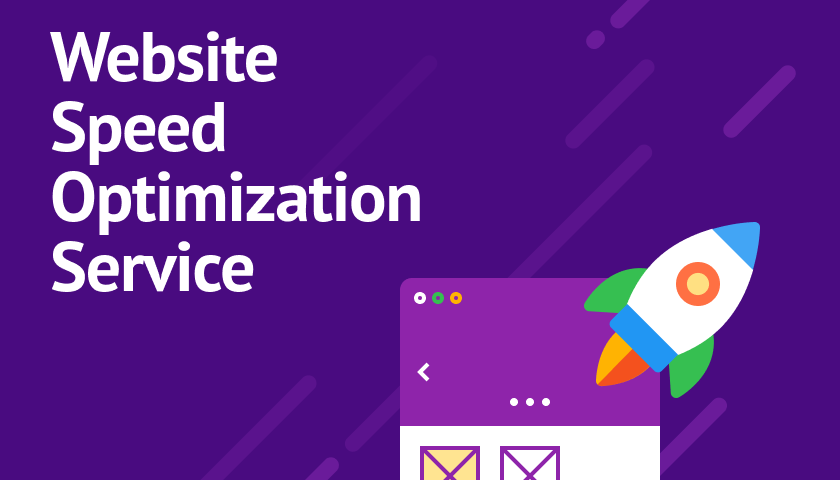Mastering Website Speed Optimization: A Comprehensive Guide
Comprehensive Guide to Vue.js Development
May 23, 2024
Securing Your Website: A Comprehensive Guide to Secure Hosting
May 23, 2024Mastering Website Speed Optimization: A Comprehensive Guide
In today’s digital age, website speed is paramount. Users expect websites to load quickly, and search engines favor fast-loading sites in their rankings. Slow-loading websites not only frustrate users but also lead to higher bounce rates and lower conversion rates. Therefore, optimizing website speed is essential for improving user experience, increasing engagement, and driving business growth. In this comprehensive guide, we’ll delve into the various aspects of website speed optimization, including the importance of speed, factors affecting website performance, and actionable strategies to enhance website speed.
Thank you for reading this post, don't forget to subscribe!Importance of Website Speed
1. User Experience (UX):
- Fast-loading websites provide a seamless user experience, keeping visitors engaged and satisfied.
- Slow-loading websites frustrate users, leading to higher bounce rates and decreased user retention.
2. Search Engine Optimization (SEO):
- Search engines like Google consider website speed as a ranking factor.
- Faster websites rank higher in search engine results pages (SERPs), leading to increased visibility and organic traffic.
3. Conversion Rates:
- Website speed directly impacts conversion rates and online sales.
- Faster websites tend to have higher conversion rates, resulting in increased revenue and business growth.
4. Mobile Experience:
- With the rise of mobile browsing, website speed is crucial for delivering a seamless experience across devices.
- Mobile users have even lower tolerance for slow-loading websites, making speed optimization essential for mobile success.
Factors Affecting Website Performance
1. Server Performance:
- The quality and performance of web hosting servers significantly impact website speed.
- Choose a reliable hosting provider with optimized server configurations and adequate resources.
2. File Size and Compression:
- Large file sizes, including images, scripts, and multimedia content, can slow down website loading times.
- Compress files and assets to reduce their size without compromising quality, using techniques like image compression and minification of CSS and JavaScript files.
3. Caching:
- Caching stores frequently accessed website data locally, reducing server load and improving page load times.
- Implement browser caching, server-side caching, and content delivery network (CDN) caching for optimal performance.
4. Code Optimization:
- Bloated or inefficient code can increase website load times.
- Optimize HTML, CSS, and JavaScript code for faster rendering and execution, remove unnecessary elements, and leverage browser caching mechanisms.
5. Network and Connection Speed:
- Users with slower internet connections may experience longer load times.
- Optimize website assets for quick delivery, prioritize critical content, and implement progressive loading techniques.
6. Third-Party Scripts and Plugins:
- Excessive third-party scripts and plugins can introduce delays and dependencies, affecting website performance.
- Limit the use of third-party integrations, evaluate their impact on performance, and consider asynchronous loading or deferred loading for non-essential scripts.
Actionable Strategies for Website Speed Optimization
1. Optimize Images:
- Use appropriate image formats (e.g., JPEG, PNG, SVG) and compress images without sacrificing quality.
- Specify image dimensions, utilize responsive images, and lazy-load images to defer loading off-screen images until they are needed.
2. Minify and Concatenate Files:
- Minify CSS, JavaScript, and HTML files by removing unnecessary whitespace, comments, and redundant code.
- Concatenate multiple files into single files to reduce the number of server requests and improve loading times.
3. Implement Browser Caching:
- Leverage browser caching by setting appropriate cache-control headers for static resources.
- Specify expiration times for cached content to instruct browsers to store resources locally and reduce server requests.
4. Utilize Content Delivery Networks (CDNs):
- Use CDNs to distribute website content across multiple servers worldwide, reducing latency and improving page load times for users across different geographic regions.
- Serve static assets, such as images, scripts, and stylesheets, from CDN edge servers for faster delivery.
5. Enable Gzip Compression:
- Enable Gzip compression to reduce the size of HTTP responses sent from the server to the client.
- Compress text-based assets, such as HTML, CSS, and JavaScript files, to minimize bandwidth usage and improve loading speeds.
6. Optimize Server Response Time:
- Optimize server configurations, database queries, and backend code to minimize server response times.
- Implement caching mechanisms, database indexing, and server-side optimizations to reduce latency and improve server performance.
7. Prioritize Above-the-Fold Content:
- Prioritize the loading of above-the-fold content, such as critical CSS and visible page elements, to improve perceived performance.
- Inline critical CSS or preload CSS to render essential stylesheets early in the page loading process.
8. Reduce Redirects and Server Requests:
- Minimize the use of redirects and reduce the number of server requests required to load a webpage.
- Use efficient server-side redirects (e.g., 301 redirects) and optimize internal linking structures to avoid unnecessary redirects.
9. Asynchronous Loading of Scripts:
- Load non-essential JavaScript asynchronously to prevent blocking the rendering of the page.
- Defer the loading of JavaScript files that are not required for initial page display, allowing critical content to load first.
10. Monitor and Test Performance Regularly:
- Use performance monitoring tools and web analytics to track website speed and identify performance bottlenecks.
- Conduct regular performance tests, such as speed audits and load tests, to measure website performance and identify areas for improvement.
Conclusion
Website speed optimization is a multifaceted process that involves various strategies and techniques to enhance loading times and improve user experience. By understanding the importance of website speed, identifying factors affecting performance, and implementing actionable optimization strategies, you can create fast, responsive, and user-friendly websites that delight visitors and drive business success. Continuously monitor and optimize website performance to ensure ongoing improvements and maintain competitive advantage in today’s fast-paced digital landscape. Remember, every millisecond counts, and optimizing website speed is a worthwhile investment that yields significant benefits in terms of user satisfaction, search engine visibility, and business performance.


